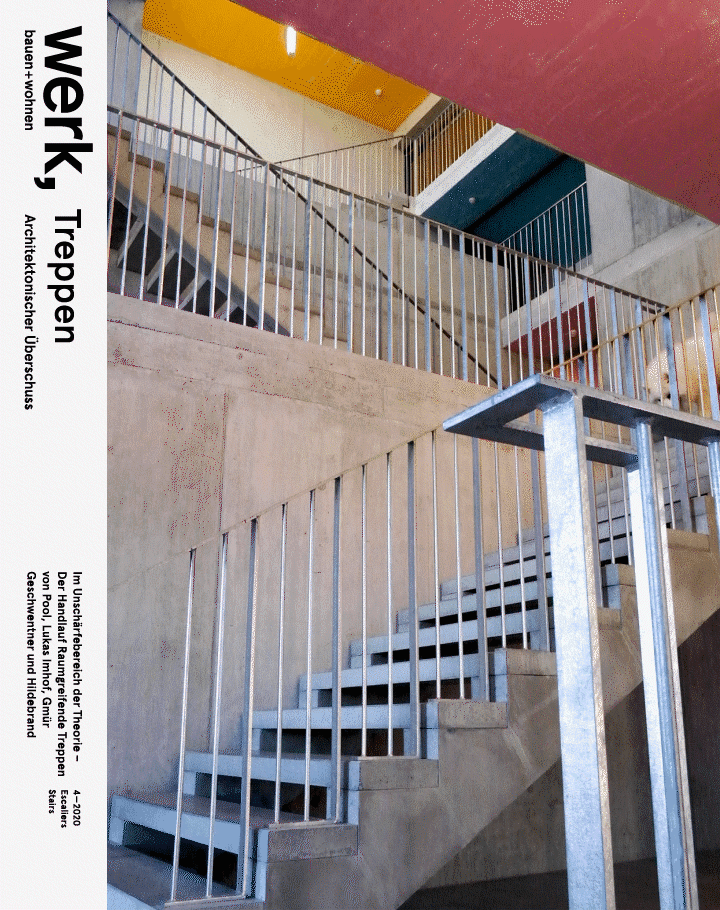werk, bauen + wohnen 4 – 2020

Architectural Excess
In this issue we noticed that, in naming their projects, the architects responsible for some of the projects tend towards a certain narrative rhetoric. For instance, a staircase is described as a “Goethe staircase” or a school as a “(da) Vinci” schoolhouse. It almost seems as if, to legitimise itself, design excess in the form of spectacular staircases must lay claim to more noble origins.
For in fact stairs are generally there just to surmount the difference in level between one floor and the next. Everyone is familiar with dark, musky and narrow staircases from their own experience. But fortunately there are also other kinds, for instance the double helix in the Château de Chambord in the Loire Valley (erroneously) attributed to Leonardo, Michelangelo’s mannerist extravagance in the Biblioteca Laurenziana in Florence, the staircase in the prince-bishop’s Residenz in Würzburg, the stairs as a stage for the bourgeoisie that leads up to the auditorium of the Opéra Garnier in Paris—or Le Corbusier’s ramps resembling conveyor belts in the Centrosojus in Moscow.
Since the Renaissance presenting the act of ascending has offered architects a genuine area of activity in which to deal with complexity and a guaranteed spatial gain: staircases need room and create space, they connect spaces and open up views. Astonishingly this is still true, even under the regime of SIA norms 358 and 500, despite prescribed railing heights and freedom from barriers. Or is it, perhaps, the other way around?—that, precisely because of standards and cost pressure, staircases demand achievements at the highest level from architects?
But the reason could be very different: Nowhere else do we experience architecture so directly with our bodies as when climbing a staircase. In the age of the almost contact-free swipe gestures this is an asset that should not be underestimated. In contrast to travelling in a cramped lift cabin the effort involved in climbing upwards creates a feeling of physical— but also visual, tactile and mental, and indeed even social – interaction that is important for the conscious perception of the space that sur-rounds us. Nowhere else than on a staircase can that form of relationship develop, to which the German sociologist Hartmut Rosa has devoted a book called Resonanz, which is rec-ommended to all involved in making architecture. — Tibor Joanelly, Jenny Keller